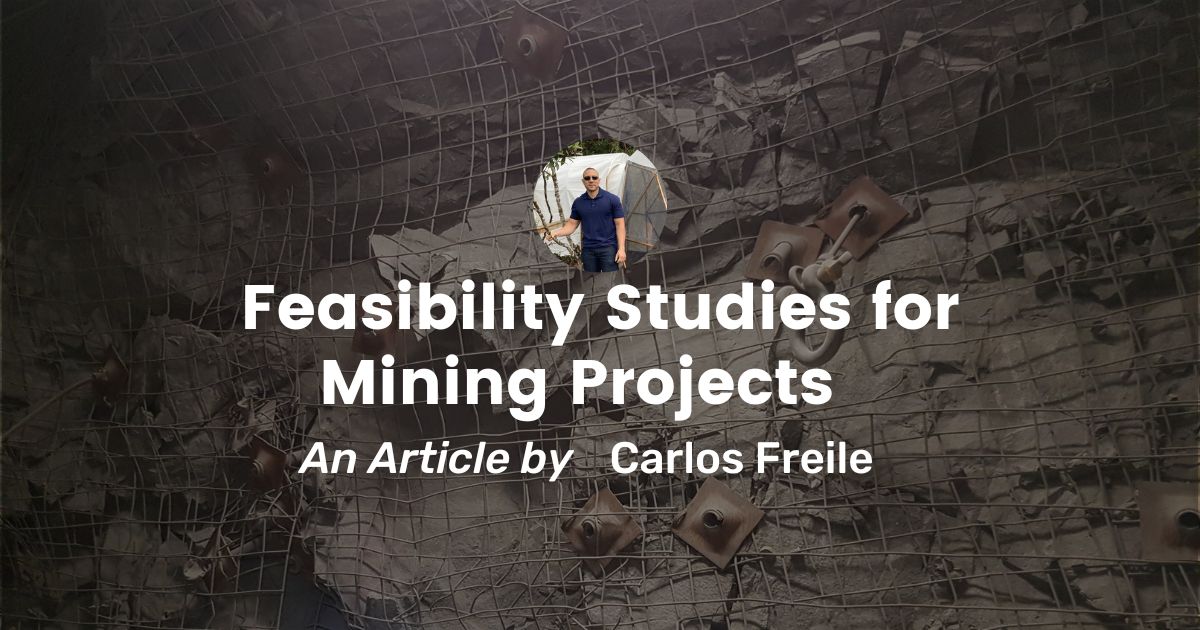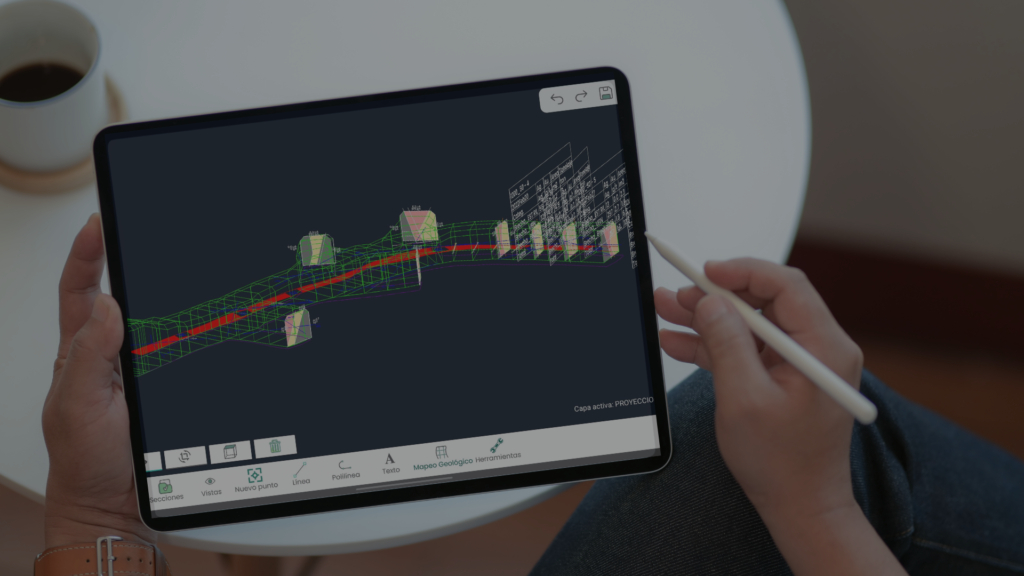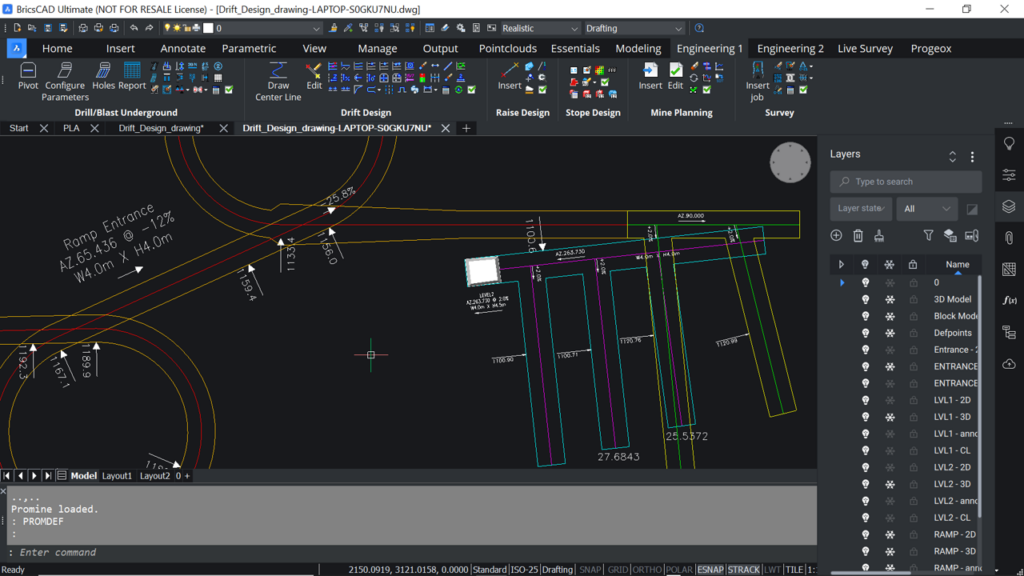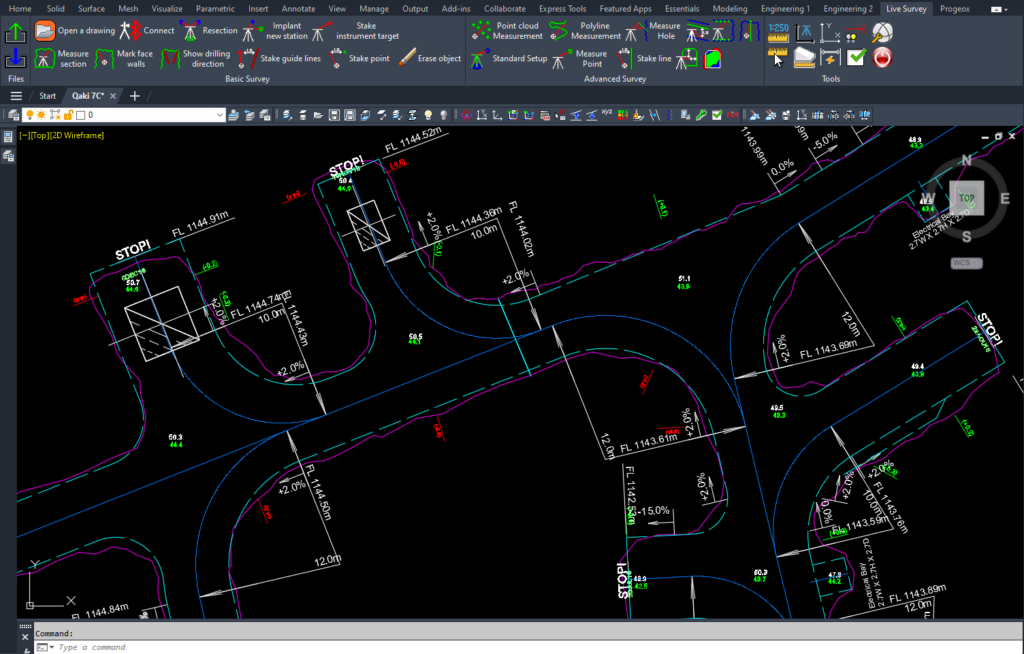There is no international agreement on the terminology for each stage of feasibility study and there is no agreed standard for quality or accuracy. The AusIMM’s Monograph 27, Cost Estimation Handbook provides a set of standards which may become more widely used. While it is convenient to refer to Scoping Studies, Prefeasibility Studies, and final Feasibility Studies, in reality the study process is iterative, and several increasingly detailed Prefeasibility Studies may be undertaken before committing to the final Feasibility Study.
Scoping Studies
A Scoping Study may be carried out very early in the exploration phase, as a basis for acquiring exploration areas or making a commitment for exploration funding. At this stage the investment risk may be relatively small, but it is obviously undesirable to expend further funds on something that has no chance of being economic.
The major risk at this stage is that a viable mining project is relinquished due to an inadequate assessment. As there is a very low probability of an exploration project proceeding to become a mine it is evident that this risk is quite a serious one at the Scoping Study stage. For this reason, it is essential that experienced people are involved in the Scoping Study. The intended estimation accuracy is usually 30 to 35 per cent, though some companies accept +/- 50 per cent.
It is acceptable for Scoping Studies to be based on very limited information or speculative assumptions in the absence of hard data. The study is directed at the potential of the property rather than a conservative view based on limited information.
A sensitivity analysis, however, should present the likely range of possible outcomes so that decision making, including investment decisions that may follow a public release of the study results, is not biased to the optimistic end of the range.
Prefeasibility Studies
There are common reasons for carrying out Prefeasibility Studies:
As a basis for committing to a major exploration program following a successful preliminary program. It is possible for commitments of tens of millions of dollars or more to be made for ongoing exploration and development based on a Prefeasibility Study, prior to decision to mine. For example, where ore reserves cannot be proven by surface drilling underground development may be required for exploration at an early stage of the project.
To attract a buyer to the project or to attract a joint venture partner or as a basis for a major underwriting to raise the required risk capital. A Prefeasibility Study may also be prepared in full or in part by potential purchasers as part of the due diligence process.
To provide a justification for proceeding to a final Feasibility Study.
The results of a Prefeasibility Study may be the first hard project information which is seen by corporate decision makers and investors.
Usually the findings are announced publicly so that it becomes difficult to change perceptions with subsequent information. In such cases, the Prefeasibility Study has become the real decision point, with the subsequent Feasibility Study being seen by management and investors as a necessary step along a path which has already been irrevocably committed. While undesirable, this sequence of events may occur due to modern reporting requirements.
For these reasons the Prefeasibility Study must be prepared with great care by experienced people, and its conclusions should be heavily qualified wherever necessary. Assumptions should be realistic rather than optimistic because it is very difficult to bring management and markets back to reality in the event that the final Feasibility Study is significantly less favourable.
Final Feasibility Studies
The final Feasibility Study is usually based on the most attractive alternative for the project as previously determined. The aim of the study is to remove all significant uncertainties and to present the relevant information with back up material in a concise and accessible way. The final Feasibility Study has a number of key objectives:
to demonstrate within a reasonable confidence that the project can be constructed and operated in a technically sound and economically viable manner
to provide a basis for detailed design and construction
to enable the raising of finance for the project from banks or other sources.
The term bankable is sometimes used in connection with final Feasibility Studies. This just means that the study achieves a quality and standard that would be acceptable for submission to bankers. Whether a particular bank will actually lend against the project is another question, depending on many matters that are outside the control of the feasibility study team.
Whether the project design has been optimised in the feasibility study will depend on the time and budget allowed. Often a sub-optimal but acceptable design is used as the basis of the feasibility study with further optimisation undertaken (or not) once the project has been approved.
The feasibility study is only a step along the design path. Much more work must be undertaken during the detailed engineering phase which follows project approval. The engineering work is usually ongoing through project completion, commissioning and early production.
Reporting Ore Reserves
While reporting requirements vary around the world, a Prefeasibility Study is the minimum level of study that should be completed before reporting an ore reserve.






